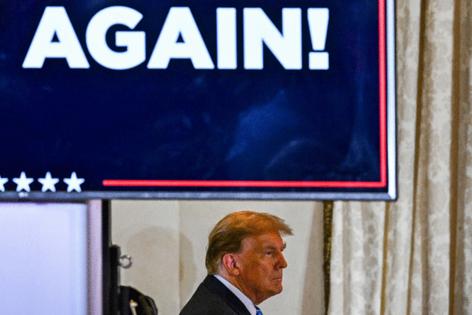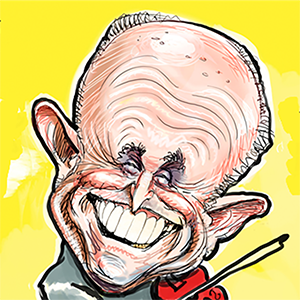Commentary: A better way to pay for extending the Trump tax cuts
Published in Political News
One of the first orders of business in 2025 for Congress and the incoming administration will be the extension of President Donald Trump’s signature 2017 tax law, the Tax Cuts and Jobs Act (TCJA), most of whose individual provisions are set to expire late next year. There’s one problem: America’s debt trajectory is unsustainable.
Even if the TCJA isn’t extended, U.S. debt would reach 122% of gross domestic product in 2034, exceeding the nation’s prior peak of 106% in 1946 just after World War II. But if Congress does extend the TCJA without finding ways to pay for it, the problem becomes even bigger, with debt rising to 133% of GDP by 2034. And that’s before any tax cuts Congress tries to add.
In the past, Congress has managed the spiraling cost of tax-cut legislation through “sunsetting,” or making certain provisions expire so that the costs look lower on paper. But the reality is that when dusk comes, both parties scramble to keep tax cuts alive. Trump and Congress should take a different approach with the TCJA and find a way to pay for it. Fortunately, there is a potential solution that should be acceptable to Republicans, since they floated it not too long ago, and would also serve to make Trump’s proposed tariffs more efficient and less economically damaging.
Debt is not inherently bad. In fact, borrowing to finance things like public investment and one-time recession relief can be prudent, especially for a country like the U.S., whose debt has singular advantages. U.S. Treasury securities represent the largest and most liquid government bond market in the world and they are denominated in the world’s primary reserve currency, whose supply the U.S. has a monopoly on. This is why Treasuries don’t have trouble finding buyers.
The U.S. also has an excellent track record of economic growth over time, which can make debt financing sensible for certain policies. If, say, an infrastructure project benefits future — and likely richer — generations, why not pass some of the costs onto them?
But this strategy falls apart when debt grows faster than the economy, because debt is also a claim on the future real resources of the economy. Too much debt crowds out private investment and erodes the convenience and liquidity benefits of government securities, leading to higher interest rates and makes us poorer over the long-term. Using relationships from Congressional Budget Office (CBO) modeling, I calculate that the crowding-out effects of extending the TCJA without “payfors” will lower real gross national product per household by $1,400 (in 2024 dollars) in 2034 and by $5,300 in 2049.
Crowding out is particularly problematic if it causes economic conditions themselves to be unsustainable — that is, if interest rates rise above the rate of economic growth. When that happens, bending the debt curve back down becomes considerably harder, because the rising cost to service the debt — interest expense — could cause debt to outgrow the economy.
The good news is that under current law, the CBO forecasts GDP growing consistently faster than the level of interest rates through 2034. The bad news is that if we make the debt situation worse by extending the TCJA without paying for it, then using estimates from the economic literature of the relationship between debt and interest rates, it could prove enough to flip interest rates above growth within the next 10 years. Of course, any additional deficit-financed policies beyond the TCJA would only heighten risk of such a flip.
A broad misconception is that America has to balance its budget to have a healthy fiscal outlook. But because of our financial advantages, that’s probably unnecessary in most instances. Merely keeping debt-to-GDP stable would be sufficient. Even by this lower bar, however, the task ahead is immense. Without extending the TCJA, we would still need $8 trillion in deficit reduction over the next 10 years just to end 2034 with the same debt-to-GDP as 2024. And if Congress extends the TCJA, we’ll need $12 trillion.
Moreover, growth — whether from the promises of an artificial intelligence-induced productivity boom or deregulation — simply cannot be enough to solve the problem. Even if productivity surged by half a percentage point starting next year and sustained the higher pace for a decade — tantamount to the growth premium the U.S. enjoyed during the Second Industrial Revolution when innovations like electricity and the telephone were introduced — debt-to-GDP would still expand to a new record by 2034.
The incoming Trump administration has already engaged the House Ways & Means Committee about at least partially paying for a TCJA extension. But the proposed payfor — tariffs — would be both economically damaging and an inefficient, unreliable revenue source. Our modeling at The Budget Lab suggests that, for example, a 20% broad tariff with a 60% tariff on China would be conventionally scored as bringing in $4.4 trillion in net tax revenue over a decade — enough to cover a TCJA extension. But foreign retaliation would lower tariff revenue by about 25%. And the hit to the U.S. economy — our modeling suggests the level of U.S. real GDP is 1% lower in the medium term under this proposal — would further shrink revenue. In reality, these tariffs could only raise about $2.7 trillion, almost half of the conventional score.
If the Trump administration wants a less economically damaging alternative, it could do much worse than looking back to 2016, when then-Speaker of the House Paul Ryan proposed a destination-based cash flow tax (DBCFT), which is essentially a business-side income tax that excludes employee payrolls and investment. Because it exempts investment, it does not disincentivize productive uses of capital. And since its base is broader and more stable than imports, the rate can be lower.
A DBCFT is also unlikely to spark the destructive trade backlash that tariffs would (though the Trump administration would probably like that a DBCFT explicitly exempts our exports and taxes imports). My back-of-the-envelope calculations suggest a DBCFT in the neighborhood of 16% could raise enough to cover an extension of the TCJA, which is a lower rate than the equivalent tariff needed for the same amount of revenue.
In his victory speech, President-elect Trump said he would “fix everything about our country.” That’s a tall order for any leader, but next year is a golden opportunity to, if not fix a potential debt crisis, at least do no more harm.
____
This column does not necessarily reflect the opinion of the editorial board or Bloomberg LP and its owners.
Ernie Tedeschi is the director of economics at the Budget Lab at Yale University and the former chief economist at the White House Council of Economic Advisers under the Biden administration.
©2024 Bloomberg L.P. Visit bloomberg.com/opinion. Distributed by Tribune Content Agency, LLC.




























































Comments